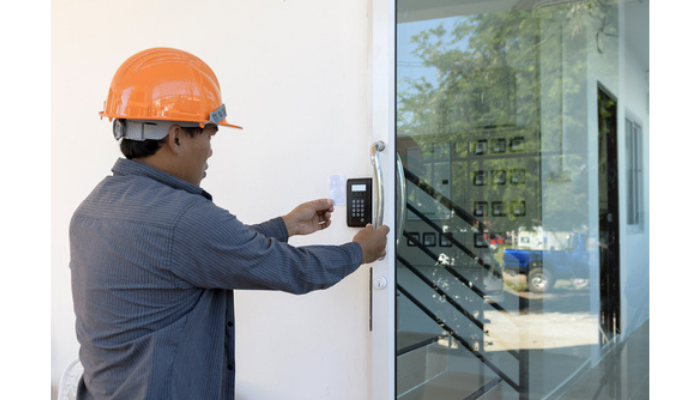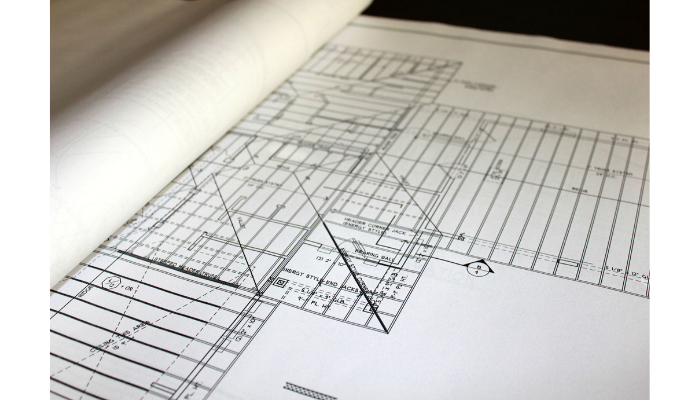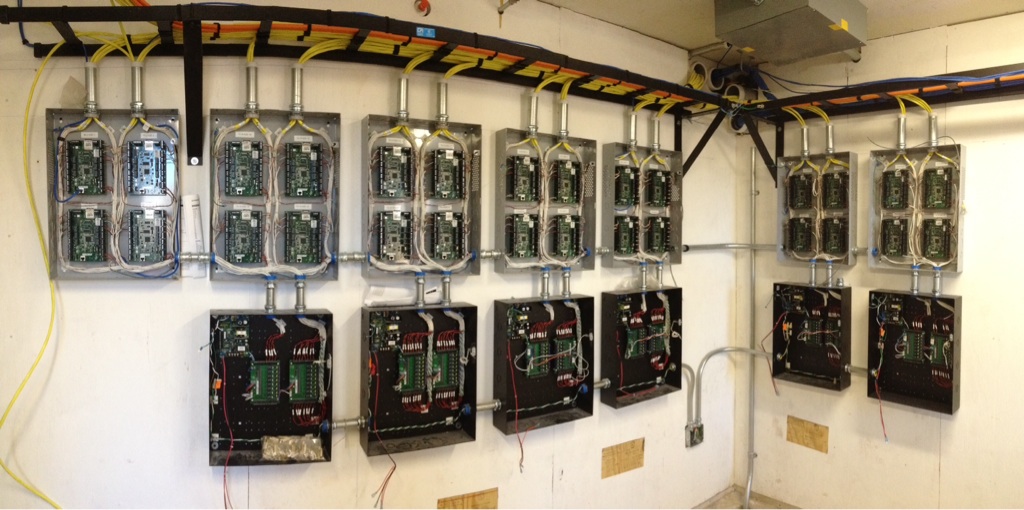Access Control System Installation Guide
This complete guide will take you through the step-by-step process for Access Control System Installation. .
There are various things to consider when installing an access control system for your business. This guide will help you move in the right direction and plan in an organized manner, helping you overcome operational or technical challenges that you may face during the process.

How to Install Access Control Systems
There are six steps to a proper Access Control System Installation:
Step 1: Planning & Design
Planning is the most important step in any process. Without a proper plan, it is rare to receive the desired outcome. Likewise, access control installers require proper planning. Proper planning helps to reduce errors and ensures you get the exact system needed for your facility.

Analyze Your access Security goals Vulnerabilities and Needs
Begin by reflecting on your business requirements. Then perform an in-depth analysis of your business’s current security measures to build a security plan that meets your needs. Here are a few questions you need to consider:
- What type of credentials are you using? What format are they? How many of these credentials are issued? Can it support your expected cardholder population? Are they capable of ensuring any duplicate IDs?
- What investments have been made so far? Is the current system upgradeable?
- What assets do you have, ranging from physical assets to shareholder records?
- Where are you storing your business data like employee records, client data, etc.?
- What is your vision for the access control system? Is it scalable and capable of integration?
- How many doors do you have in your facility that you need to secure?
- What is the square footage of your location?
- What types of accesses do you need for your facility like vehicular, pedestrian, etc.?
- Are there different access levels for your facility?
- What is the cost associated with the current security system?
Designing a complete Access Control System
Once you have reflected on your needs and the planning is in place, it is time to start to uncover the core details for your access control installation, such as:
- How many different types of readers are required?
- How many different types of locks are required?
- What forms of authentication are required, and by how many people?
- Apart from readers and locks, what other tools are required for door access control in your facility?
- What Access Control Management System is currently in use?
- Do you want a wired or wireless access communication system?
- Do you want a system that is exclusive to a single manufacturer or do you want to design a custom open-source access control system?
Cost Expectations
Technology advancements provide more secure solutions for your facility. Despite technological advancements over the years, many businesses still use traditional keys. Some businesses cannot afford the costs of a new access control system regardless of the return on investment in the long run.
A good access control system costs between $2,000 and $10,000 with most of the cost coming from the door access equipment and components.
- The average price for electronic access control ranges from $1,000 to $4,000 per door installed.
- Electronic Locks costs run between $20 and $900
- Door readers and door controllers ranges from $80 to $3,500.
- Hardware’s such as motion sensors are priced between $10 and $500 each.
- A basic licensing fee for your access control software is around $600/year
- Maintenance of the access control system costs between $0 and $50/month per door.
There are two main factors that will affect the pricing of an access control system – material cost and labor cost.
Hiring Professional Installers
Independent Physical Security Consultants like Umbrella Technologies can assess the situation, guide you throughout the process of Access Control Installation and help you to choose the best access control system for your business.
Other Important Factors to Consider Before Installing Access Control
The additional considerations for Access Control Installation will depend on various factors. Here are some of the other factors that influence the installation:
Types of Systems
There are many different types of systems such as standalone, mobile-based, integrated, or cloud-based.
It is important to have in-depth knowledge of the benefits of each of these access types before selecting a particular system. This will help to avoid difficulties with business operations and procedures after the installation is complete.
Technology
Choosing the best technology suitable for the access control system is important.
Will the new system installed capable of upgrading to new technologies in future?
Application Needs
Application Needs are important consideration when installing access control system
A security professional like Umbrella Technologies can help you to break down the installation process – Where will the system be installed? What security level is suitable for that area? How can the data be managed by the system?
Security Needs
Right authorization needs to be provided to the users in the facility
What authorization is suitable for users based on business and operational goals – single authorization or multi-factor authorization. What level of monitoring will be needed to maintain your business’ security needs?
Installation Requirements
Here are few question you might consider for the access control installations
Will your company use an in-house staff or a professional installer? What are the company’s current software integration capabilities? Are they compatible with third-party hardware?
Communication capabilities
Communication is the key in access control installation
How will the new access control system communicate with the existing technology used by the company? How will the different components exchange information within the system? Do you want a wired or wireless communication system?
Step 2: Procurement
Once the planning and designing of the access control system are completed, It is time for procurement. You should send your plan to a trusted security partner, like Umbrella Technologies, to get a realistic quote for the system. Once the security partner is finalized, an agreement is made between the two for implementation of the access control system – which may include a preventive maintenance service agreement.
Choosing the Right Access Control Equipment
The right access control equipment is needed to protect against theft of data, property, resources and prevent unauthorized entry in your facility. The objective for choosing the right access control equipment is to improve productivity, help in identifying administrative staff, and properly sign in legitimate visitors. Picking the right equipment will help the business to scale sustainably.
Quick Tip: Installing battery-powered or wireless locks versus wired locks will save end-users over 80% in the labor cost of access control installers. Wireless installation is faster is more efficient as no cabling effort required in the installation process.
Step 3: Installation
At this stage, the Access Control Installation takes place.
How to install access control hardware
Controller, boards, and power supplies
The controller is the main component of access control system
The controller is the main component where all the devices or access control equipment’s like readers, power supply board (the device that supplies power across the system and keeps the controller, readers and electronic locks functioning), and door lock sensors, are linked in one place. It hosts your local database and bridges your access control hardware to the cloud or on-premise system that controls the access authentication process based on the rules or roles set by the organization.
Card Readers
In the entry point of your facility, the device where you scan or touch your credential to gain access to the facility is a reader.
The device reads your credential and passed the information to the master controller to check on the user authentication. To install card proximity readers, you will need a 6-conductor wire. This wire runs from outside the door to the access control panel.
Locks
There are different types of electronic or magnetic locks that keep the door locked and protect your assets.
To install magnetic locks, you will need a 2-conductor wire. This wire runs from the door frame to the access control panel.
Door position switches
Door Switches helps in monitoring the status of the door
This device monitors the status of the door and indicates if the door is open or closed.
Running the Wires
Site inspection helps the security professional to get first impressions on the location of potential devices and how to direct the cables to the main controller and power board. Once the inspection is done, the works starts on running the cables from the rooms to the door controllers that controls the whole operation.

Step 4: Configuration
Configuring System Settings
When everything is set up physically and mounted, you will need to configure the board and all the hardware for the system. You will need internet access to configure the system.
First, plug your panel into power and connect it directly to a computer via an Ethernet cable, launch the web browser and type the IP address of your panel in the address bar. Once you log in to the web browser with the default username and password (admin, admin), the interface will take you through the steps to configure. Fill out the information’s currently like language, function, controller name, time zone, and any additional required information.
The live monitor can be accessible from the main page that shows you all the access events taking place in your facility like card scanned, access granted/denied, time of access, someone enters, someone exits, etc.
User Authentication
Once the device and system configuration is done, you can now give users access to certain locations in your facility based on their role or set of rules as per the company’s security protocol.
Step 5: Inspection & Testing
The inspection and testing take place throughout the access control installation process. It is important to test the connectivity of each system and test the power flowing through the systems to ensure proper functioning of the whole system.
Testing each piece of hardware, the control panel and the overall system after regular changes can reduce the risk of having to go back and find an error. Each lock should be tested properly prior to and during business hours. Trying to gain access with valid and invalid credentials will ensure the system is working as expected.
If the project involves installation of additional systems, such as video surveillance, mass emergency notification, or visitor management you should check to make sure the new access control system works properly with the integrated systems.
Step 6: Training and Onboarding
Once the system is tested and implemented, the human part of the process comes into the picture – onboarding. The process shouldn’t take much time, but it is important that all users understand how to use their access credentials.
Training is another important step, this helps managers to use the system correctly to avoid operational challenges.
Each phase of access control installation involves specific knowledge of some sort. Access control system experts such as Umbrella Technologies, can provide a seamless access control installation. Contact us today for expert advice on access control installation.
Why Should I Install Access Control?
Here are some of the outstanding reasons for securing your commercial businesses with a complete access control system:
Customizable System
Access is customizable. You can designate specific permissions based on user roles. This allows your business to provide permission to access the facility at certain times based on user, role, or job responsibilities.
No fear of losing keys
Access control systems remove the pain in maintaining a traditional key-based access system. Losing keys was common with traditional keys.
Easy log access
The system allows you to keep track of who enters or exits your facility.
Remote Access
This is a great feature, hosting the system with cloud services, allows you to control your access anywhere and at any time.
Cut Costs
Using a keycard access control system is a more cost-effective solution than traditional keys in many ways. If someone loses a key card, it’s much easier to replace a key card and reprogram the system than changing your building’s locks. Changing the locks is pain and an expensive process because every employee will need to be issued a new key.
How long does an access system installation take?
It depends- but it can take 30-60 minutes per proximity card reader & about an hour for the door controllers- depending on how many doors you have. Software & database integration can be 2-5 hours.
